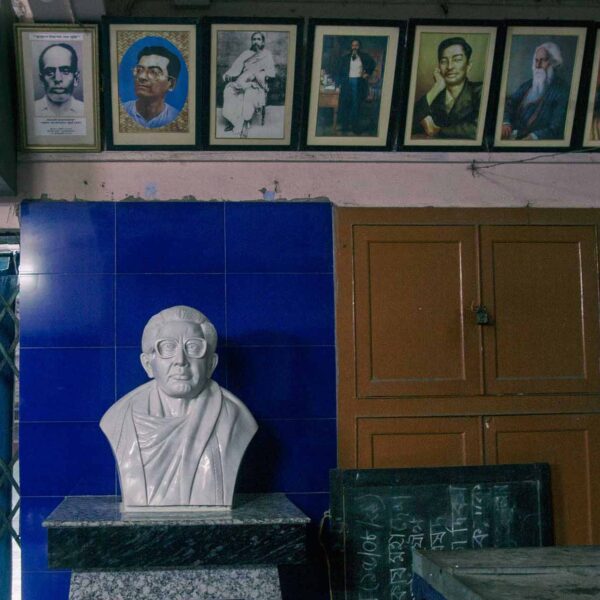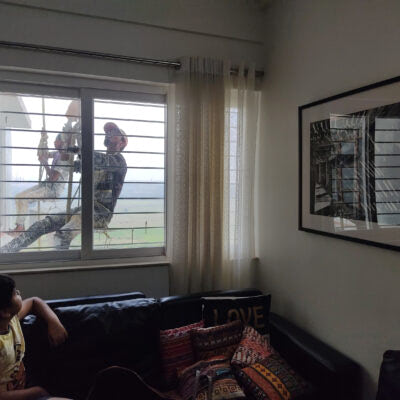The history of civilization has evolved gradually through a complex process, from hunting, food gathering and agriculture to modern technology and urbanization. This process of evolution continues even today.
People in the world have broken down their social structures and built new ones. Civilization after civilization has moved forward through this game of breaking and building. The flow of this change continues even today. But this change in civilization has had a dialectical effect on the mind of man. His mind has created a conflict between the old and the new.
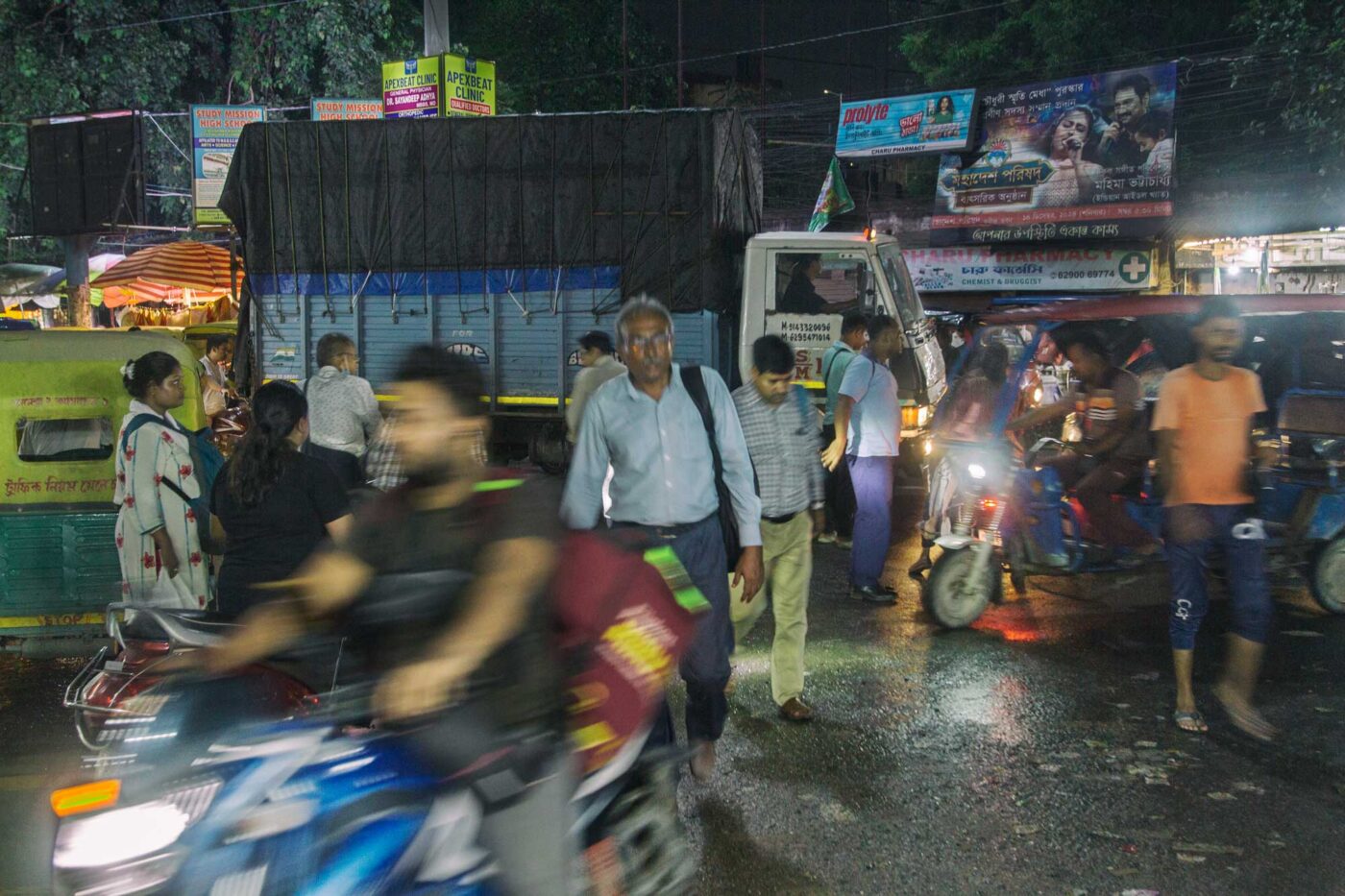
Now our village is slowly taking on the appearance of a chaotic city. A chaotic crowd is forming on the streets.
July 29, 2025. Nabagram, Hooghly, West Bengal.
Although human welcomes the new, his mind somehow wants to hold on to the old. In the village where I grew up the history was, after the partition, a stream of people from East Pakistan (now Bangladesh) started settling there. They soon built my village – called “Nabagram”. It was once a remote area of Hooghly district. But where people start settling, time moves quickly through changes. A new society and culture was formed.
Multistoried houses are being built. They are standing like walls covering the open sky. As a result, the air circulation is blocked, increasing the amount of heat in the environment day by day.
July 29, 2025. Nabagram, Hooghly, West Bengal.

There was another reason for the importance of this region. In the area next to our Nabagram, Uttarpara, “Hindustan Motors” was established in 1942, which was once the largest car manufacturing company in India. A large number of people from this region and the surrounding areas worked in this factory. Later, its importance decreased due to free competition in the industry. Finally, the factory was closed in 2014. Due to its proximity to Kolkata city through railways, the village gradually starts to look like a suburb. The population starts to grow. Among them, a class of people created a refined cultural environment of Bengalis in this village. It was through the hands of those people that a cultural atmosphere of literature, music, and an elegant taste was created in my village. Along with this, they built their houses here in harmony.
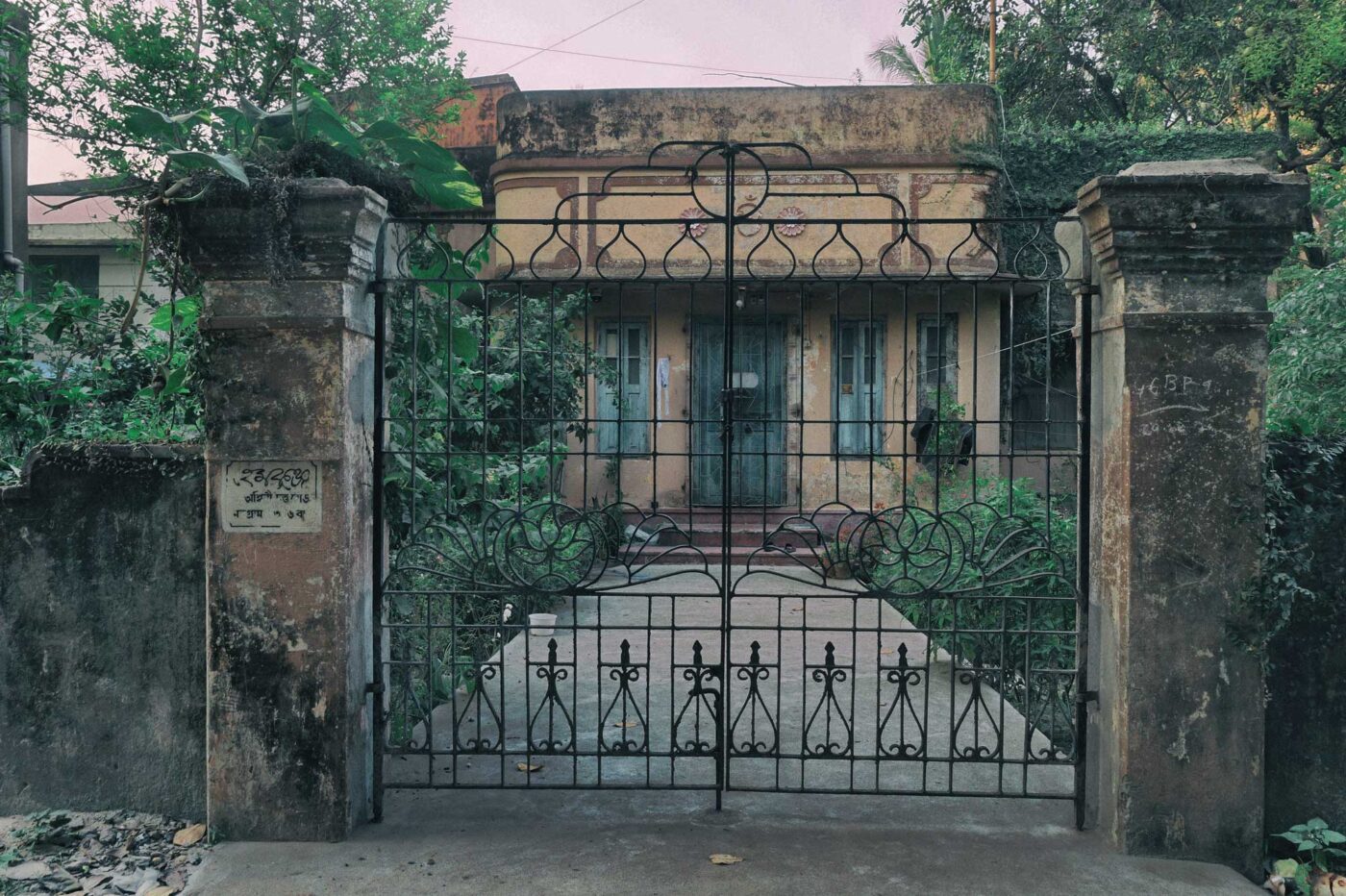
One of the old houses in our village that still remains. The name of the house is “Hemkunj” which means in english, where there is a place covered with vines or bushes, which looks like a house. With a wrought iron gate, a garden in front, this kind of beautiful and elegant house is a notable example of the architectural style prevalent in Bengali families of that era.
July 29, 2025. Nabagram, Hooghly, West Bengal.
The houses were architecturally elegant and beautiful. Almost every house had a garden at the entrance. And with it, there was a natural environment. Which was the source of our life. I was growing up in this environment and cultural atmosphere in my village in the nineties. As time went on, and with it, communication system and technology improved. Today, my village is trying to transform from a suburb into a fully-fledged city at the speed of change. Currently, a crowd of people from different provinces of India are coming here, creating a mixed culture in this village. As a result, the Bengali’s own cultural identity is being erased. A chaotic situation is being created on the roads. And many of the people who were culturally aware here in the past are no longer alive today.
I took a picture of one of them in 2010, Basanta Ranjan Dasgupta. He was a very educated and intellectual person in our village. He had a wide range of knowledge on various subjects. He had a profound knowledge of the poetry of Rabindranath Tagore. He had a strong love for Bengali theatre. In this village, he created a theatre practice area with his friends. He was also a skilled actor himself. He spent most of the day studying the Vedas and Vedanta philosophy. We often went to him to listen a discussion on philosophy, literature, film, politics etc. But he died in 2021 at the age of ninety-seven. But that picture of him is still a memory for me.
Basanta Ranjan Dasgupta who passed away in 2021. I took this picture in 2010. He was born in Telirbag village of Bikrampur district in Bangladesh. In 1948, Basant Ranjan Dasgupta’s working life began in the Industrial Finance Corporation of India. Gradually, with his incredible talent and work skills, he held an important position as an industrial advisor to the West Bengal government. Since retiring from work, he has led a spiritual and disciplined life. He spent most of the day studying the Vedas and Vedanta philosophy. He was about ninety-seven years old at the time of his death. He was a very educated and intellectual person in our village. Such people are now becoming rare in Bengali society.
August 6, 2010. Nabagram, Hooghly, West Bengal.

There was another type of people who carried within their minds a kind of refugee memory from Pakistan (Bangladesh). And the few who are still leading a lonely life. But they have cherished that memory in their hearts. One such person is Deepak Chowdhury. He came to our village from East Pakistan (Bangladesh) in 1965 and settled there. Later, he started various social service activities with the young boys here. He was a great admirer of Swami Vivekananda. He also loved gardening. Now, at the age of almost eighty, he has given up all social activities and spends his time alone. He told me sadly, “Now no one comes to me. And I don’t go out for my health. So, I spend time in the garden, watching the mango blossoms and the birds build their nests.”
Bengali joint families started breaking down long ago. But with the changing times, they have now dispersed and become nuclear families. Not only that, but nowadays, any social interaction between people from those families has almost ceased. Several joint families used to celebrate Durga Puja and Kali Puja in our village. Today, almost all of those families have moved to different places by selling their houses. As a result, all those family pujas have stopped. I took a picture of a Kali Puja of one such joint family in our village in 2008.
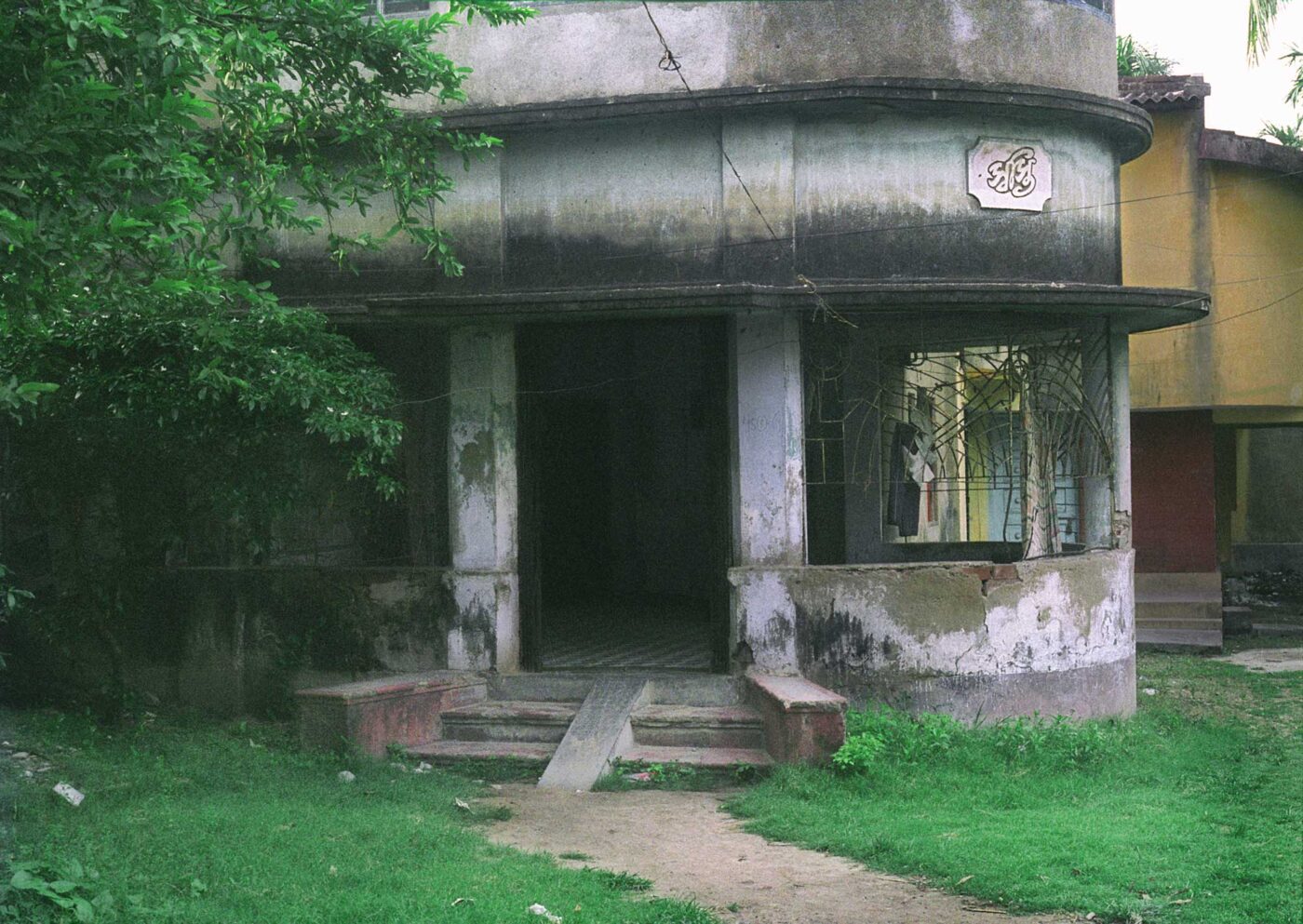
The name of this house is “Swasthi” which means physical and mental peace and comfort. I took this picture of this house in 2008. The house has been demolished and now it is a huge housing apartment complex.
May 12, 2008. Nabagram, Hooghly, West Bengal.
This family sold their house to a real estate agent. The entire family is now separated from each other. Their Kali Puja was almost 90 years old in our village. Today, nothing remains. The houses of the educated middle-class Bengalis with taste are being taken over by real estate agent today. They are being demolished and multistoried houses are being built. They are standing like walls covering the open sky. As a result, the air circulation is blocked, increasing the amount of heat in the environment day by day. And with that, the nature of my village is being destroyed day by day.
I see this change before my eyes and my mind is filled with memories of the past. So sometimes I go to the remaining nature of my new village. I still find peace standing in this hugely inconsistent time. But I know that this nature will not be saved from the greed of humans for much longer.
Deepak Chowdhury came to our village from East Pakistan (Bangladesh) in 1965 and settled there. He was born in Dhirashram, Ghazipur district, East Pakistan (now Bangladesh). He still lives in the memories of that village. He told me, “My mind is stuck in that village, Dhirashram, that river, fields, houses, friends. Can a river fish like me live in this small pond anymore”?
July 27, 2025. Nabagram, Hooghly, West Bengal.


This is a picture of a Bengali joint family. In the picture, all the members of the family have gathered for Kali Puja. I took this picture in 2008. This family sold their house to a real estate agent. The entire family is now separated from each other. Their Kali Puja was almost 90 years old in our village. Today, nothing remains.
October 28, 2008. Nabagram, Hooghly, West Bengal.
In this picture, an old Ambassador car is lying in front of the entrance of the house. The car has been lying neglected for a long time. But the owner of the house does not want to sell it because he has many memories associated with this Ambassador car. In the area next to our Navagram, Uttarpara, “Hindustan Motors” was established in 1942, which was once the largest car manufacturing company in India. A large number of people from this region and the surrounding areas worked in this factory. Later, its importance decreased due to free competition in the industry. Finally, the factory was closed in 2014. Thus, one thing ends and time flows in another direction.
July 12, 2025. Nabagram, Hooghly, West Bengal.
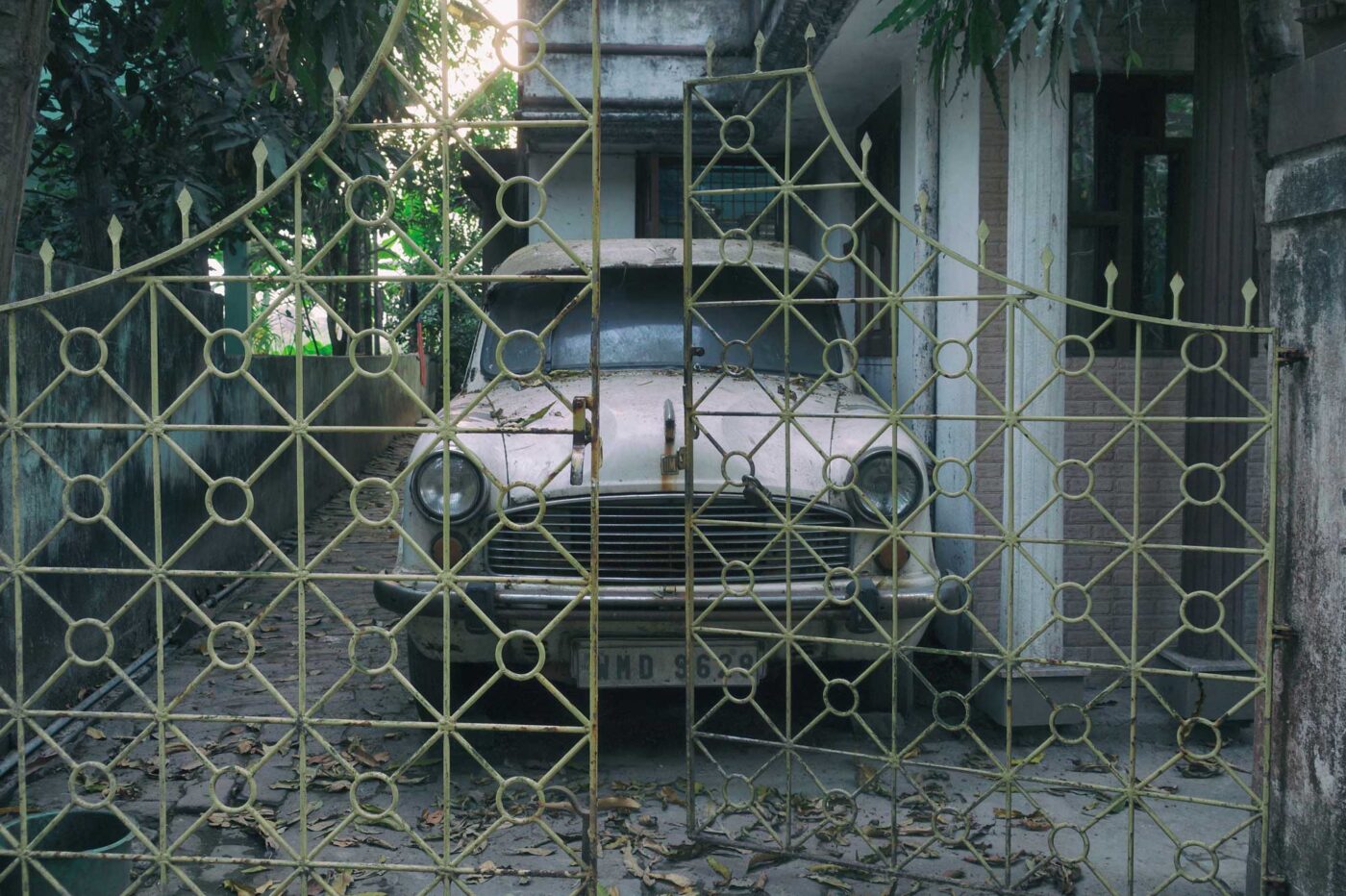

The remaining nature of my village, where its old form is still alive. A rural natural beauty. In the words of Thomas Hardy, “A face on which time makes but little impression”. But the ravages of time will soon destroy this scene too.
July 4, 2025. Nabagram, Hooghly, West Bengal.
This natural environment of my village is slowly becoming a victim of pollution. This nature is now becoming a dumping ground.
July 29, 2025. Nabagram, Hooghly, West Bengal.







